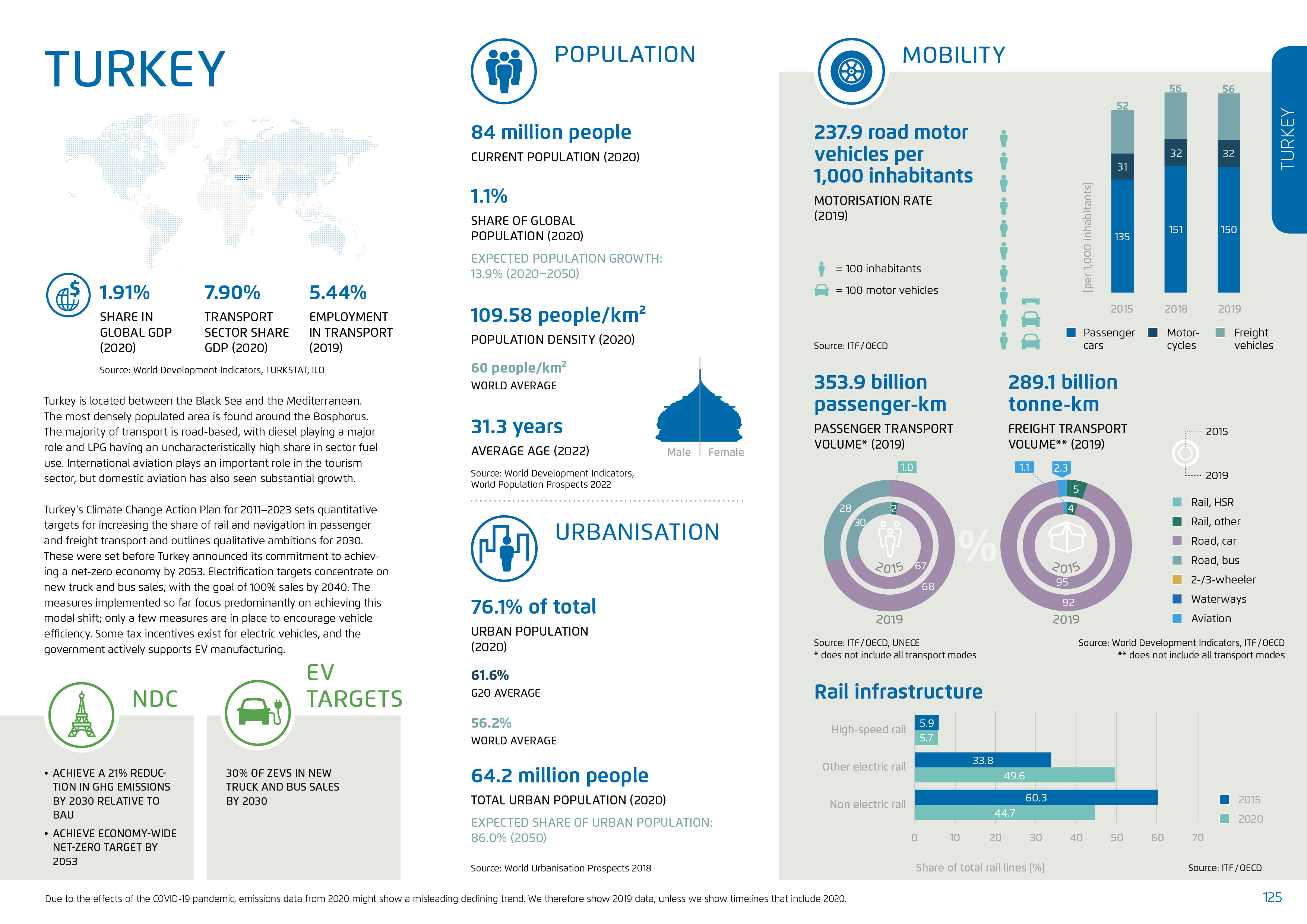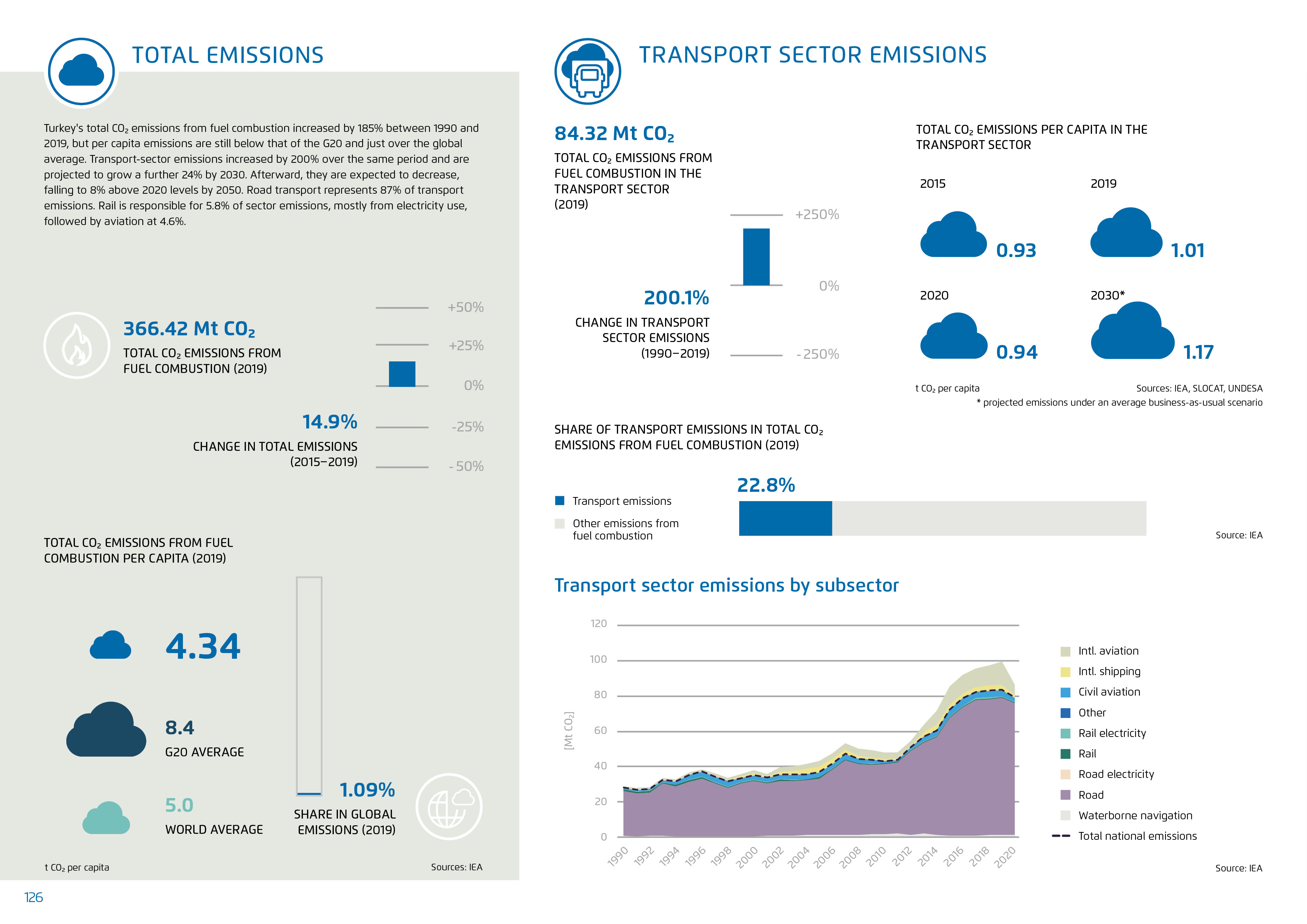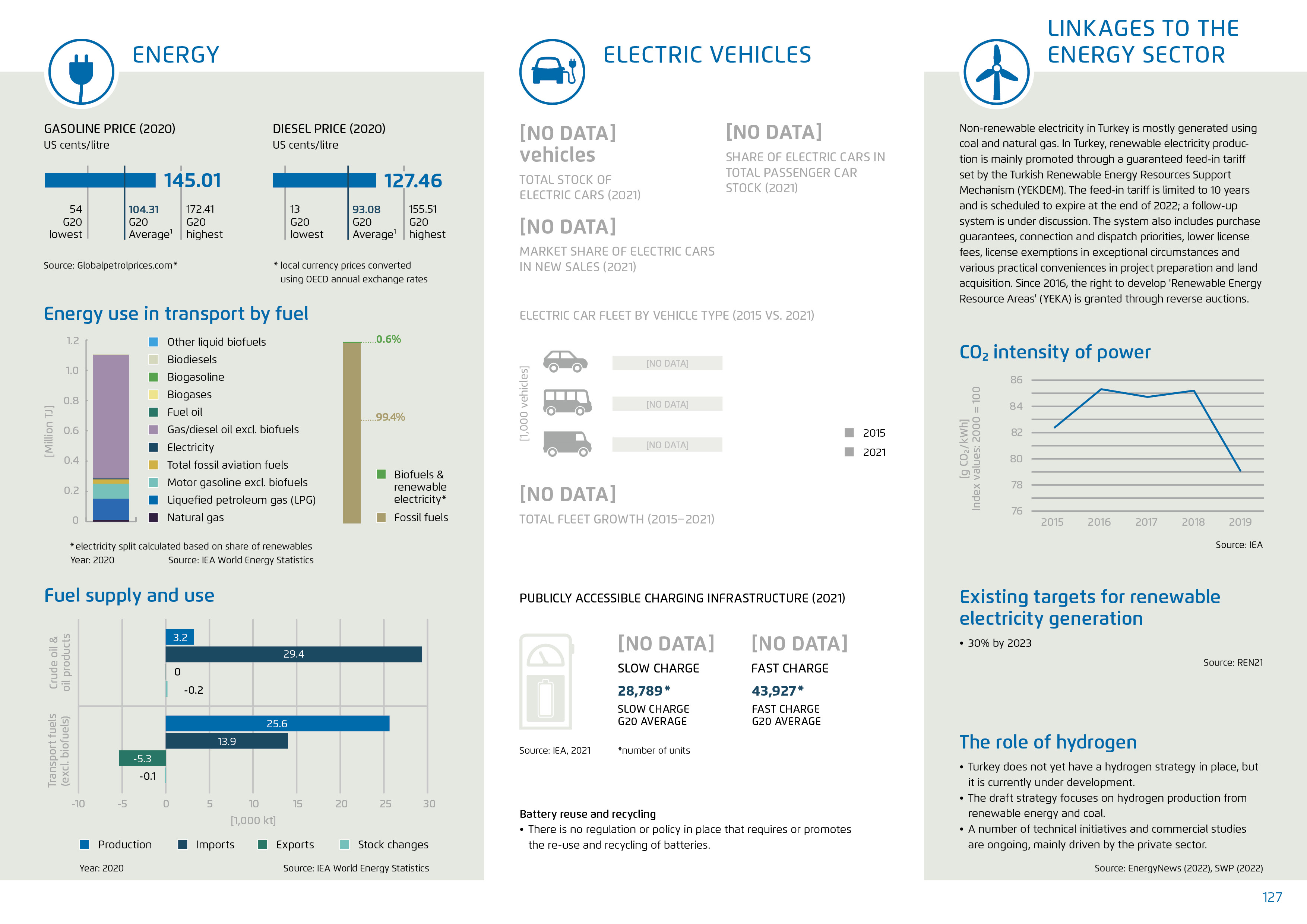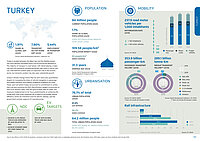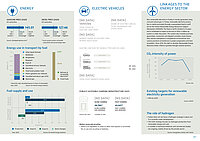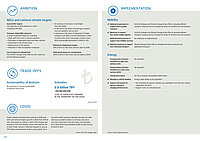This content is also available in: German
Turkey
Net-zero target: 2053 / Motorisation rate (2020): 237.9 vehicles per 1,000 inhabitants / Change in transport sector emissions (1990-2019): 200.1 % / Projected total CO2 emissions per capita in the transport sector in 2030: 1.17 t
Turkey is located between the Black Sea and the Mediterranean. The most densely populated area is found around the Bosphorus. The majority of transport is road-based, with diesel playing a major role and LPG having an uncharacteristically high share in sector fuel use. International aviation plays an important role in the tourism sector, but domestic aviation has also seen substantial growth.
Turkey's Climate Change Action Plan for 2011–2023 sets quantitative targets for increasing the share of rail and navigation in passenger and freight transport and outlines qualitative ambitions for 2030. These were set before Turkey announced its commitment to achieving a net-zero economy by 2053. Electrification targets concentrate on new truck and bus sales, with the goal of 100% sales by 2040. The measures implemented so far focus predominantly on achieving this modal shift; only a few measures are in place to encourage vehicle efficiency. Some tax incentives exist for electric vehicles, and the government actively supports EV manufacturing.
Key figures on transport and climate
Published in Towards Decarbonizing Transport 2023.

